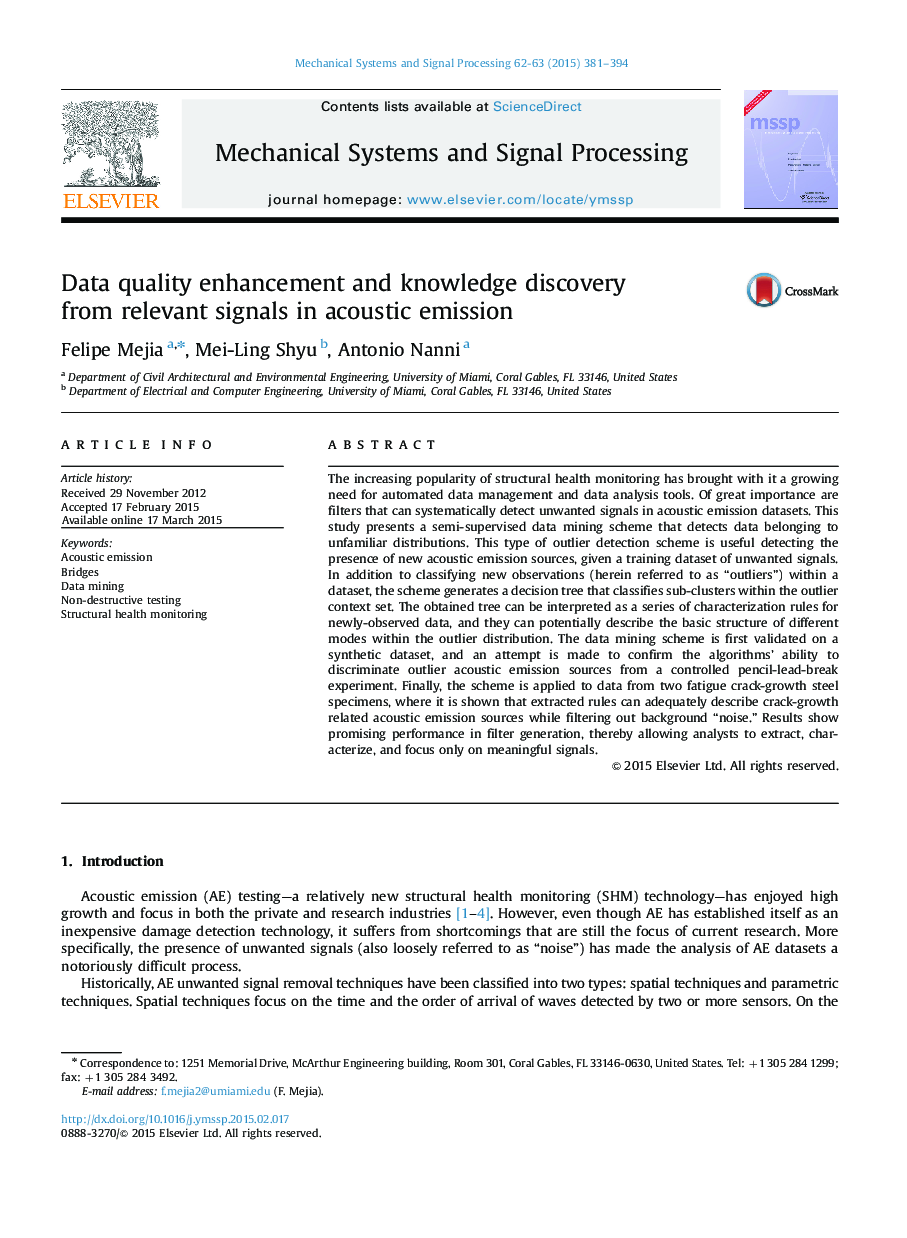| Article ID | Journal | Published Year | Pages | File Type |
|---|---|---|---|---|
| 560158 | Mechanical Systems and Signal Processing | 2015 | 14 Pages |
•Using this scheme, AE signals can be filtered and characterized with greater than 95% accuracy given adequate training datasets.•AE from PLBs can be characterized as having an average frequency less than 125 kHz and a duration greater than or equal to 12.5 ms.•AE from crack-growth in SE(T) specimens can be characterized as having an average signal level greater than 26.5 dBAE.
The increasing popularity of structural health monitoring has brought with it a growing need for automated data management and data analysis tools. Of great importance are filters that can systematically detect unwanted signals in acoustic emission datasets. This study presents a semi-supervised data mining scheme that detects data belonging to unfamiliar distributions. This type of outlier detection scheme is useful detecting the presence of new acoustic emission sources, given a training dataset of unwanted signals. In addition to classifying new observations (herein referred to as “outliers”) within a dataset, the scheme generates a decision tree that classifies sub-clusters within the outlier context set. The obtained tree can be interpreted as a series of characterization rules for newly-observed data, and they can potentially describe the basic structure of different modes within the outlier distribution. The data mining scheme is first validated on a synthetic dataset, and an attempt is made to confirm the algorithms’ ability to discriminate outlier acoustic emission sources from a controlled pencil-lead-break experiment. Finally, the scheme is applied to data from two fatigue crack-growth steel specimens, where it is shown that extracted rules can adequately describe crack-growth related acoustic emission sources while filtering out background “noise.” Results show promising performance in filter generation, thereby allowing analysts to extract, characterize, and focus only on meaningful signals.
